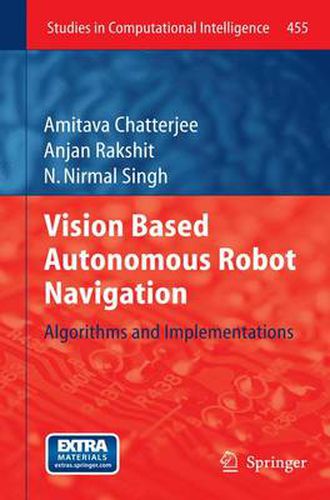Readings Newsletter
Become a Readings Member to make your shopping experience even easier.
Sign in or sign up for free!
You’re not far away from qualifying for FREE standard shipping within Australia
You’ve qualified for FREE standard shipping within Australia
The cart is loading…






This title is printed to order. This book may have been self-published. If so, we cannot guarantee the quality of the content. In the main most books will have gone through the editing process however some may not. We therefore suggest that you be aware of this before ordering this book. If in doubt check either the author or publisher’s details as we are unable to accept any returns unless they are faulty. Please contact us if you have any questions.
This monograph is devoted to the theory and development of autonomous navigation of mobile robots using computer vision based sensing mechanism. The conventional robot navigation systems, utilizing traditional sensors like ultrasonic, IR, GPS, laser sensors etc., suffer several drawbacks related to either the physical limitations of the sensor or incur high cost. Vision sensing has emerged as a popular alternative where cameras can be used to reduce the overall cost, maintaining high degree of intelligence, flexibility and robustness.
This book includes a detailed description of several new approaches for real life vision based autonomous navigation algorithms and SLAM. It presents the concept of how subgoal based goal-driven navigation can be carried out using vision sensing. The development concept of vision based robots for path/line tracking using fuzzy logic is presented, as well as how a low-cost robot can be indigenously developed in the laboratory with microcontroller based sensor systems. The book describes successful implementation of integration of low-cost, external peripherals, with off-the-shelf procured robots. An important highlight of the book is that it presents a detailed, step-by-step sample demonstration of how vision-based navigation modules can be actually implemented in real life, under 32-bit Windows environment. The book also discusses the concept of implementing vision based SLAM employing a two camera based system.
$9.00 standard shipping within Australia
FREE standard shipping within Australia for orders over $100.00
Express & International shipping calculated at checkout
This title is printed to order. This book may have been self-published. If so, we cannot guarantee the quality of the content. In the main most books will have gone through the editing process however some may not. We therefore suggest that you be aware of this before ordering this book. If in doubt check either the author or publisher’s details as we are unable to accept any returns unless they are faulty. Please contact us if you have any questions.
This monograph is devoted to the theory and development of autonomous navigation of mobile robots using computer vision based sensing mechanism. The conventional robot navigation systems, utilizing traditional sensors like ultrasonic, IR, GPS, laser sensors etc., suffer several drawbacks related to either the physical limitations of the sensor or incur high cost. Vision sensing has emerged as a popular alternative where cameras can be used to reduce the overall cost, maintaining high degree of intelligence, flexibility and robustness.
This book includes a detailed description of several new approaches for real life vision based autonomous navigation algorithms and SLAM. It presents the concept of how subgoal based goal-driven navigation can be carried out using vision sensing. The development concept of vision based robots for path/line tracking using fuzzy logic is presented, as well as how a low-cost robot can be indigenously developed in the laboratory with microcontroller based sensor systems. The book describes successful implementation of integration of low-cost, external peripherals, with off-the-shelf procured robots. An important highlight of the book is that it presents a detailed, step-by-step sample demonstration of how vision-based navigation modules can be actually implemented in real life, under 32-bit Windows environment. The book also discusses the concept of implementing vision based SLAM employing a two camera based system.